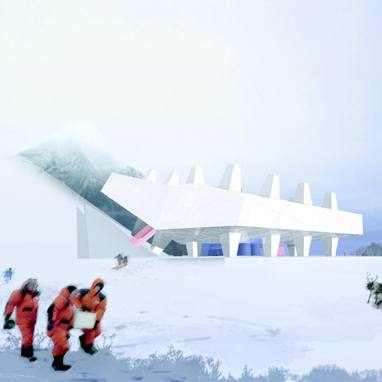
Mammoth and Permafrost Museum by Leeser Arch.
We're not making it up: Leeser Architecture of New York have won a competition to design the World Mammoth and Permafrost Museum in Yakutsk, Siberia.
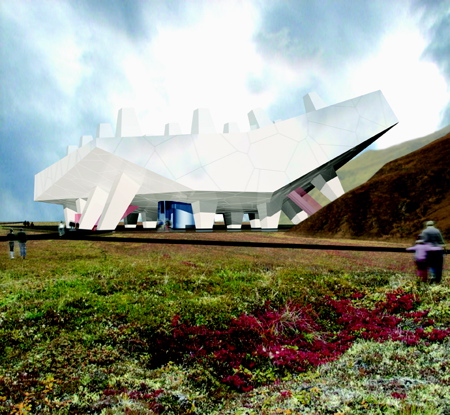
The super-insulated building is fitted with a host of technologies to reduce its impact on the extreme yet fragile environment while serving as both a research centre and museum.
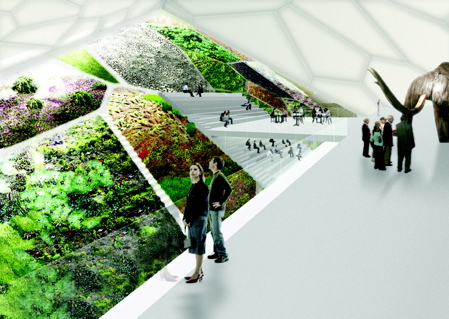
The centre will contain an intact mammoth discovered nearby and provide access to underground galleries from which the permafrost can be viewed.
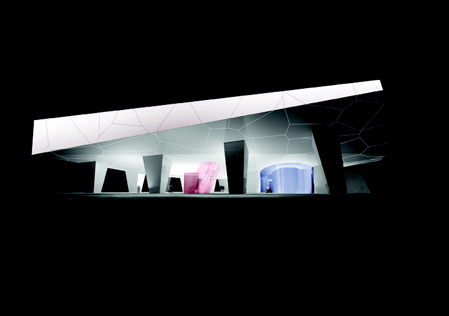
Here's the press release:
--
LEESER ARCHITECTURE WINS COMPETITION FOR WORLD MAMMOTH AND PERMAFROST MUSEUM IN THE REPUBLIC OF SAKHA-YAKUTIA IN SIBERIA
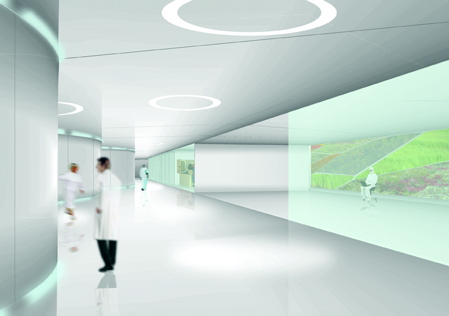
Cutting Edge Design Pioneers New Model for Building in Ecologically Sensitive Sites
New York – Leeser Architecture has won the international competition for the World Mammoth and Permafrost Museum in the city of Yakutsk in the Republic of Sakha-Yakutia in the center of Siberia. The Museum and Scientific Research Center and Laboratory study Siberian mammoths and permafrost, the natural habitat where their remains have been found. Leeser Architecture’s pioneering design creates a shelter for life within extreme surroundings, preserving the permafrost and fostering a comfortable learning, working and socializing environment. Renowned for innovating new technologies that respond to particular problems, Leeser Architecture has created an architectural prototype for building in harsh climates and ecologically sensitive sites. Finalists included Antoine Predock (US), Massimilio Fuksas (Italy), SRL (Denmark) and YakuProekt (Republic of Sakha-Yakutia, Russia).
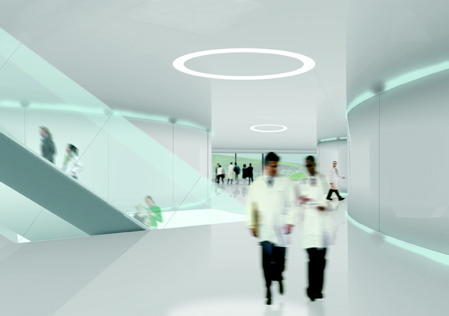
The Museum is sited at the foot of the Tchoutchour Mouran, a hill that punctuates the vast flat landscape of western Yakutsk. The building’s box-like volume, the most efficient and simple of shapes, turns up where it meets the hill to emulate the rising geography. Naturally patterned by the effects of shifting permafrost cycles, cells planted with native grasses, mosses and trees have been reintroduced to the landscape, reflecting the existing topography and improving site hydrology.
Designed as a low-impact, highly insulated, and well-conditioned response to the extreme climate, the Museum is elevated on structural supports 20 feet above the patterned ground. Minimal surface area contact enables as little heat transfer as possible to the thermally sensitive permafrost. The Museum’s translucent skin is patterned by the logic of the self-regulating geometries of the permafrost. The envelope is constructed of a super-insulated double wall glazed façade with an Aerogel lattice network situated between the glazing layers. Natural light is provided to the interior perimeter zones while Aerogel’s silica pores trap gas modules to slow down the transfer of heat energy.
Inverted legs on the roof act as light collectors, capturing sunlight form the south and west. Light monitors, positioned to disrupt wind patterning and minimize snow drifting on the roof, regulate shades to prevent heat loss. Energy use in the building is reduced by the efficient daylight capture as well as the use of high-efficiency artificial lighting, efficient chillers and boilers, air heat recovery, displacement ventilation, and the well-insulated envelope. Wind turbines and solar photo-voltaic cells produce electricity which is stored on site, reducing the building’s dependency on the grid.
The building has been designed so the worlds of the museum and scientific research can coexist without contamination. Visitors are afforded views of restricted levels—the mechanical and research lab levels—by escalators that take them in a climate controlled tube through the building up to the museum level. Situated under the rooftop light monitors, the museum level is a large interior volume with a main hall as its nexus. It is adjacent to the reception areas, shops, auditorium, conference rooms, media library, exhibition spaces, and a café that floats within an indoor garden. The hall also provides access to underground Permafrost Galleries deep within the Tchoutchour Mouran where visitors can view a recently discovered intact woolly mammoth.
Extensive and intensive indoor gardens promote a sense of year-round natural life even in the desolate winter months. Cascading at the perimeter of the building’s interior, lush thick mats of moss and lichen, the natural insulators of permafrost ground, grow between a latticework of pathways. The gardens add color, insulation value, filter indoor air and maintain air humidity. Visitors may view the gardens from above, while researchers may venture out to experience plant-life first hand.
About LEESER ARCHITECTURE:
LEESER ARCHITECTURE is an internationally recognized studio known as a pioneer in design specializing in the inclusion of new media and digital technologies in architecture. Based in New York City, the studio has gained international reputation through cutting edge investigations and design research incorporating and anticipating current and future cultural trends and conditions.
A close collaboration with each client and a careful analysis of the client's needs are fundamental work methodologies of the studio. The firm's work encompasses architectural design at all scales. LEESER ARCHITECTURE specializes in the design of museums and exhibitions, performing arts centers, and film and digital video theaters and works with an extensive list of specialty consultants.
The studio has achieved worldwide recognition for its influential designs, such as the Eyebeam Atelier of Art and Technology, and the Twin House, which is part of the permanent collection of the Museum of Modern Art in New York. LEESER ARCHITECTURE was one of only five international firms selected to design the Olympic Village for NYC2012, participated in the 2004 Venice Biennale, architecture's most prestigious international exhibition, and is currently working on a $50 Million addition and renovation of the Museum of the Moving Image in New York City, as well as on the World Mammoth and Permafrost Museum in Yakutsk, Siberia.
Recently completed projects include the 3LD Art and Technology Center in Lower Manhattan, the first cultural institution to rebuild after September 11, 2001; as well as two inaugural exhibitions for Laboral Centro de Arte y Creation Industrial in Gijon, Spain.